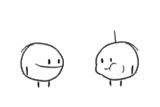WASHINGTON - Tsunami waves unleashed by a huge earthquake in Chile were moving across the entire Pacific Ocean Saturday and will peter out in Japan with foot-high waves, a meteorologist said.
"We could be looking at an all-day event," US National Weather Service meteorologist Eric Lau told AFP.
"It will stop once it hits the landmasses on the other side of the Pacific, in Asia. The wave is spread out across the entire body of water in the Pacific."
He said Japan, Taiwan and the Philippines would likely see the last of the tsunami waves, as the event loses strength during its westward journey. Over 10,600 miles (17,060 kilometers) separate Chile and Japan.
The Earth's largest body of water, the Pacific Ocean covers more than a third of the planet's surface at some 60 million square miles (155.6 million square kilometers).
Dozens of Pacific Rim nations were on tsunami alert after the 8.8-magnitude quake left at least 122 people dead, with French Polynesia first in the firing line.
Alarms sounded off at 6:00 am in coastal areas of Hawaii, to warn residents to evacuate before the onset of destructive waves due to hit the Pacific island chain around 11:19 am, the first time Hawaii has experienced voluntary tsunami evacuation since 1994.
Governments across the Pacific's "Ring of Fire" implemented emergency preparations that were beefed up after the Indian Ocean disaster of 2004, when a series of immensely destructive waves killed more than 220,000 people.
The Pacific Tsunami Warning Center warned of possible "widespread damage" from waves generated by Chile's killer quake.
But Lau said experts were not bracing for an event on the scale of the 9.5-magnitude Valdiva tremor that shook Chile in 1960 during the world's largest-ever recorded quake.
"They are not looking at the situation as a worst-case scenario," he said, adding that no weather patterns were expected to exacerbate or dampen the tsunami.
The giant convulsion in 1960 tore apart more than 620 miles (1,000 kilometers) of contact between two tectonic plates and unleashed a tsunami that wrought destruction as far away as New Zealand and Australia.
A tsunami is a series of waves, and the first wave is not always the largest one, with wave heights varying significantly due to local effects and the time between tsunami waves varying between five minutes and an hour.
The threat can also continue for a number of hours if multiple waves lap the shore.
Lau explained the effect was similar to throwing a rock in a pond.
"It originates at a point, where the earthquake occurs, and then the energy is just spread out as far as it can," he said.
"If you think of it as a pond and you throw a rock in the pond and the waves spread out, that's what it looks like. You have a wave center where the rock falls, where the earthquake hits, and then the waves spread out."
The tsunami was moving in a general northwest direction, away from the epicenter of the quake offshore some 70 miles (115 kilometers) northeast of Concepcion, a coastal city of around half a million people.
Chile covers an area where two tectonic plates meet and which sees some of the greatest seismic activity anywhere in the world, with an 8.0-quake every decade or so.











0 kumint:
Post a Comment